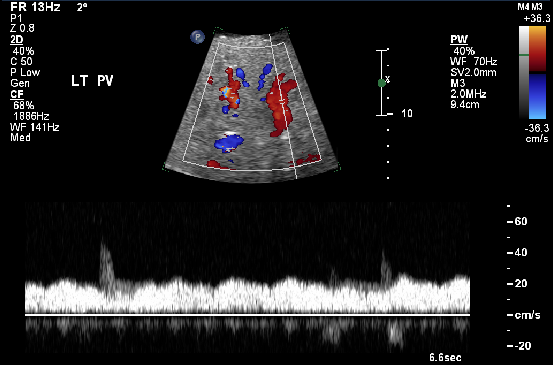History: 60 yo male for TIPS check.
Solution: US evaluation of a TIPS is a technically difficult examination for the technologists because the TIPS is often situated relatively perpendicular to the angle of insonation, making accurate velocity measurements difficult to obtain. However, there are both direct and indirect signs that can be used to evaluate TIPS function. First of all, the purpose of the TIPS is generally to control ascites, so the presence of ascites is concerning in and of itself. Next, the direction of flow in the left PV should be towards the TIPS (hepatofugal), which should be the route of least resistance, but in this case, it is away from the TIPS (hepatopedal), suggesting that there is an issue. The most commonly quoted criteria for stenosis based upon the velocity are: Peak intrashunt velocity greater than 250 cm/sec, maximum velocity in the portal venous third of the shunt of < 50 cm/sec, an interval change in velocity of at least 50 cm/sec, and maximum portal vein velocity less than or equal to 2/3 of baseline. Since you do not have comparison studies for this patient, the only criteria that the patient meets for sure is the peak intrashunt velocity of > 250 cm/sec. This patient should be evaluated for possible TIPS revision.






